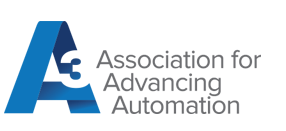The A3 Business Forum is over. What have we learned? Part 1 of 2

Posted on Feb 06, 2016 7:00 AM. 5 min read time
When you live in the North, spending a week in Florida in February isn’t bad! What’s better yet is getting an intense class on the Automation Business. Having been with Robotiq since last fall, this is my first opportunity to meet the community face to face! Here are our notes from the 2016 A3 Business Forum.
 My Favorite Quotes
My Favorite Quotes
Luke Williams on soft drink marketing: “This is not sugar water, this is American democracy in a can!”
Melonee Wise: “Everyone expects robots to work. Period.”
Alan Beaulieu: “Don’t worry about the economy: the economy will be on your side. What you have to worry about is demographics.”
Martin Buehler: “It’s only called innovation once it’s successful.”
Jeff Fryman: “Dancing with the robot: this is the dynamic definition of how much space there should between robot and human.”
Disrupt: Think the Unthinkable to Spark Transformation in Your Business
Luke Williams. NYU School of Business
Luke was a great speaker: engaging and smart, and full of insights.
Self-similarity principle: we love to surround ourselves with similar people.
This means we need to force ourselves to mix and get inspired by other industries, people with other skillsets, etc.
If you don't innovate you can't grow
Luke likened innovation to cooking and recipes. As wonderful as it is to eat the tried and true dishes, we are always looking for new and exciting foods and dishes to try. This means playing with ingredients and trying new ingredients. In the business world, how can we switch up our recipes to keep the customer engaged?
In the 21st century the most important skill is the skill of learning new skills
Doing what we’ve always done is comfortable. Changing a recipe that works is scary. But to survive, it’s necessary. The challenge is to commit to leading disruptive change: you won't know where you're going and you don't know where the industry's going.
This brings us to the experimentation method: when we have a new recipe in mind, we don’t serve it at a huge event. We try it with a small group of people (ok, our families), and when it passes the test we move on to bigger dinners (ok, friends and in-laws).
Disruptive thinking requires that you start thinking differently about the business you're in, the customer and the competition. This leads to building a portfolio of unconventional business ideas.
Data is not the end all
Data is important, but it will only get you 50% of the way there. The other half has to be powered by human imagination.
Encouraging effort and not result will allow people to feel safe in experimenting and give the permission to be wrong. This is at the heart of disruptive business: you may not hit the jackpot on your first idea.
And to feed your reflection: Best practice is just a politically correct word for cliché.
Economic Outlook and How to Prepare for it
Alan Beaulieu, Economic Institute for Trends Research
The key message from Alan was: Don’t worry about the economy: the economy will be on your side. What you have to worry about is demographics: finding good employees and keeping them.
With a mild recession to be expected in 2019, Alan recommends that we prepare ourselves to support the growth for 2016 and 2017 and get as much as we can from that rising tide, while making sure we have efficient organizations that are ready for the downturn in 2019.
The USA’s GDP has some growth, but industrial production had slowed down in the last quarter (-0.9%), largely influenced by gas prices falling. Manufacturing is not vibrant as we would like, but still growing by 2.2%.
In terms of outlook, we are expecting the manufacturing industry to grow by 1.4% in 2016, and 3.5% in 2017. When the recession hits in 2019, it is expected to affect manufacturing by a 3.3% decline. Alan is hence recommending that we build our war chests in 2016 and 2017, so that we can weather the recession storm when it hits.
One recommendation from Alan to boost our profits (and build that war chest) is to find the basset hound in our company. The basset hound is the thing that’s been around for a long time, that generates little value and feels like it’s part of the furniture. This could be an old product that’s not generating much value, a process that’s clunky, a company structure that is not aging well, whatever it is getting rid of the basset hound will lighten your costs without hurting your revenues, making you more profitable.
Creating Living Characters
Martin Buehler, Walt Disney Imagineering
Walt Disney Imagineering builds everything that goes into Disney’s parks and resorts: this includes rides, characters, floats, the works.
For Martin, experience is the core of what they do at Imagineering. As he put it so clearly: “When you go to Disney and say ‘look at this awesome robot Disney built,’ we have failed. We want to deliver suspension of disbelief, so that you see a princess, and not a robot.”
Disney Imagineering works on 3 principles:
- Invisible technology
- The importance of the story
- Innovate or perish
- Invisible technology
As cool as it may be to think about the technology that goes into making a character interactive or remote-controlling a giant dinosaur, it’s only a question of time until that technology becomes a commodity.
It’s essential that the character is the real thing: using natural motion, no gear noise or cables showing. - Above all, the story
Disney doesn’t sell things and they are not in the business of building robots. They deliver experiences. When making characters, the imagineers are looking to create an emotional connection with the guests, create wonder and awe, and create a belief for a positive future. - Innovate or perish
As invisible as the technology must be, it doesn’t mean that the imagineers can stay put. They are currently working on mobility, so that characters exist not only on the rides, but everywhere in the parks (remember the rule about no cables? Tough!).
Interactivity is also a focus: while Disney currently has interactive characters, they are remote-controlled. They are now working on automating this interactivity, with sensors and algorithms. Let’s see how his previous experience on robotic locomotion at McGill, Boston Dynamics and iRobot will bring these characters to life!
And remember: it’s only called innovation once it’s successful.
Stay tuned for the second part of our takeaways from A3 Business Forum.











Leave a comment